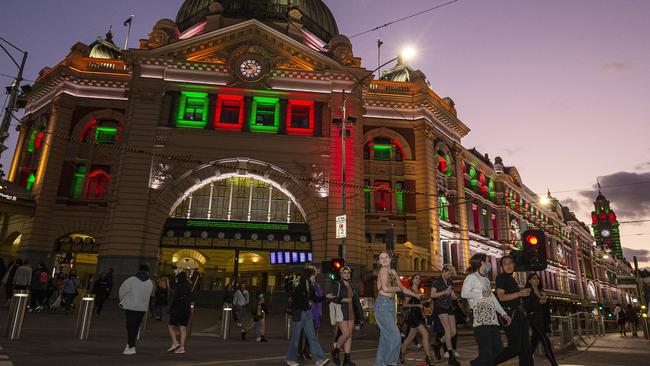Travellers’ young son tests positive; dozens of travellers experiencing symptoms
Twenty-four returned travellers are experiencing coronavirus symptoms, with a young boy among the latest active cases in quarantine.
News
Don't miss out on the headlines from News. Followed categories will be added to My News.
Victoria has recorded another COVID-19 case in a return traveller, taking the state’s active infections to six.
The new case is a boy aged less than five years old, whose parents were earlier diagnosed with the disease.
The Department of Health and Human Services confirmed in a tweet that there were no new locally-acquired cases, but one new case in someone who caught the virus overseas and was in quarantine.
“Of the 6 active cases in Victoria, 0 are locally acquired, unchanged from yesterday,” the DHHS said.
“6 are in hotel quarantine, an increase of 1 since yesterday. “It has been 44 days since the last locally acquired case was diagnosed.”
Meanwhile, limits of how many return travellers can arrive in Melbourne could be reviewed in January.
Police Minister Lisa Neville has revealed Prime Minister Scott Morrison has been told Victoria was willing to increase its the number of overseas travellers it receives next month, but no plan is locked in yet.

It comes as the number of people in the state’s revamped hotel quarantine program reached 946 on Sunday, with a further three flights and 87 more travellers expected on Sunday.
On top of the six active cases, and a further 24 have symptoms.
“What we have said to the Prime Minister is that we are looking at anything from the end of January onwards... we just need to work through how we can do that as quickly as possible, but as safe as possible,” Ms Neville said.
She also flagged the Premier had raised concerns with other states about the two German passengers that slipped through the system in Sydney last week.
Ms Neville said the problem was having hotel quarantine buses after the baggage areas rather than picking up people straight from the plane.
But no resolution has yet been found.
Currently, Melbourne is accepting an average of 160 people a day with a maximum of 1120 passengers per week.
The new ventilation installed in some hotels has also been backed by Ms Neville, who said there was no concerns of transmission through ducts in the hotel.

SIGN THAT CBD IS RECOVERING
Foot traffic in Melbourne’s CBD has surged as workers return to the city.
But the CBD is still a long way from clawing its way back to normal and latest estimates show about 13 per cent of workers have returned.
Figures show pedestrian numbers on Bourke Street Mall have risen by nearly six times what they were at the end of October. Chinatown and Town Hall have also recorded massive increases.
During the morning peak on Friday, thoroughfares such as Flinders Lane, Swanston Street and Flinders Street Station were among the most popular destinations and sensors counted hundreds of extra visitors every hour.
These were between 10 and 20 per cent higher than the monthly average.
Lord Mayor Sally Capp said CBD streets were starting to come back to life.
“Since restrictions eased in late October compared to the stage-four lockdown period, average pedestrian activity in Bourke Street Mall has increased by up to 591 per cent,” she said.

“Average pedestrian activity in Chinatown has increased by up to 350 per cent for the same period, which is great news for local businesses and restaurateurs.”
Ms Capp said about 13 per cent of CBD workers had returned so far and she urged more Victorians to visit the heart of the city.
“Although there are some encouraging signs that people are starting to return and our economic recovery is beginning, we need sustained support to ensure we bring the buzz back to Melbourne,” she said.
“I’m encouraging every Melburnian to come into the city and rediscover everything that is on offer.
“We have free parking, magnificent Christmas celebrations, the best shopping, fabulous food and wine, and outdoor dining across the city.”
Ms Capp said almost 1 million people visited the city each day before the pandemic. “At the height of the lockdown, our pedestrian sensors showed an almost 90 per cent drop in activity in some areas,” she said.
“Between stage-four lockdown restrictions easing in late October and earlier this week, average pedestrian activity has increased by 226 per cent.”




